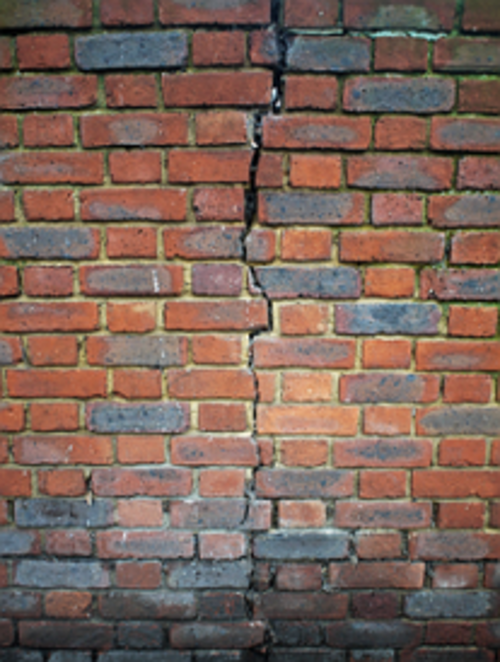Stretching a Thin Wire
 An engineer is measuring the width of an expanding crack in a wall. He fixes a thin piece of uniform wire, with its ends affixed to either side of the crack as shown in the diagram and measures its resistance
. The crack widens and the wire's length increases by 40%. The wire's volume remains constant. In percentage, how much has
increased?
An engineer is measuring the width of an expanding crack in a wall. He fixes a thin piece of uniform wire, with its ends affixed to either side of the crack as shown in the diagram and measures its resistance
. The crack widens and the wire's length increases by 40%. The wire's volume remains constant. In percentage, how much has
increased?
Assume that the wire remains uniform and ignore any 'leaks' of current to the wall or surroundings.
Image Credit: Flickr Alan Denney .
The answer is 96.
This section requires Javascript.
You are seeing this because something didn't load right. We suggest you, (a) try
refreshing the page, (b) enabling javascript if it is disabled on your browser and,
finally, (c)
loading the
non-javascript version of this page
. We're sorry about the hassle.
The wire's volume is equal to π A l , where A is the cross-sectional area of the wire, and l is its length. When the wire is stretched, we are told that the volume remains constant. We know that l is now 1 . 4 l . Let us call the new cross-sectional area of the wire A n . Then π A l = π A n × 1 . 4 l A = 1 . 4 A n A n = 1 . 4 A Resistance is directly proportional to length, so the increased length increases R by a factor of 1 . 4 . Resistance is inversely proportional to cross-sectional area, so the decreased area increases R by a factor of 1 / ( 1 / 1 . 4 ) = 1 . 4 .
Therefore R has been increased by a factor of 1 . 4 × 1 . 4 = 1 . 9 6 and so the answer is 9 6 %.